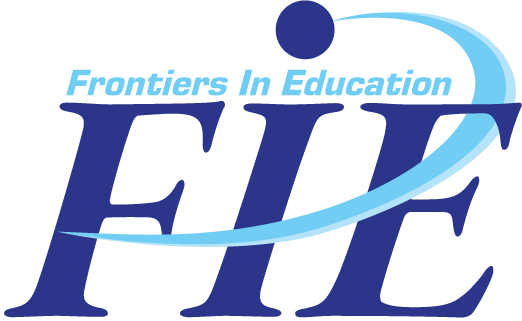The anticipated audience for FIE represents a broad spectrum of backgrounds. Attendees cover all disciplines relating to engineering education and come from a variety of institutions and organizations worldwide. Typical interests range from education research to extending promising results into their own educational settings. Attendees are eager to learn not only of your results but how your results might be applied in their particular discipline at their particular institution.
You can categorize your paper as:
1. Innovative Practice
2. Research-to-Practice
3. Research
These categories influence the overall structure and contents of the submitted work. Each category follows with suggestions for expected paper contents.
1. Innovative Practice Category
Purpose:
Papers in the innovative practice category share information about how a faculty member or team has developed and implemented novel practices across the breadth of topics of interest to conference participants. Each paper should address the following two areas.
Contribution:
Elaborate the specific contribution of the paper to innovative practice. Contributions may be made in various forms, but they should answer questions such as the following: What is unique about the innovative practice to be presented? How does this innovative practice differ from and build on previous practice as documented in the literature, including previous FIE conferences? What new ideas would conference participants take away from this paper and/or presentation?
Description:
In this section, the authors would describe the setting (in the broad context of engineering education, not necessarily the particular institutional context) for the innovative practice, motivations for the innovative practice, what has been accomplished, what results have been obtained, and what remains to be done.
Works-in-Progress:
Works-in-progress (limited to 4 pages and 1 page of acknowledgments and references) within the innovative practice category are expected to be truly innovative, i.e., something that very few people or no one else has attempted. In addition, works-in-progress should not have been completed by the time the manuscript is submitted.
The criteria for the works-in-progress in the innovative practice category are the following:
- What is the breadth of the audience that will be interested in the subject of the paper?
- To what extent are the practices described in the paper innovative, leading-edge, cutting-edge?
- To what extent is the work described complete? Work that is completed is usually not considered appropriate for a work-in-progress (WIP)
- To what extent is the paper professionally written and presented?
2. Research-to-Practice Category
Purpose:
Papers in the research-to-practice category share information about how a faculty member or group of faculty members has developed and implemented new practices explicitly based on research on engineering education and/or education. Research-to-practice papers demonstrate transfer from research to practice. Each paper should address the following two areas.
Contribution:
Elaborate the specific contribution of the paper towards illustrating how engineering education research informs engineering education practice. Contributions may be made in various forms, but they should answer such questions as: What is situation being addressed? What are the goals of the practice being implemented? What research provides the foundations for the inventive practice?
Description:
Authors should describe the setting (in the broad context of engineering education, not necessarily the particular institutional context) for the practice, motivations for the practice, research that has supported the practice, what results have been obtained, and what remains to be done.
Works-in-Progress:
Works-in-progress (limited to 4 pages and 1 page of acknowledgments and references) within the research-to-practice category are expected to be an implementation of research that has not been fully tested, i.e., research that very few people or no one else has applied. In addition, works-in-progress should not have been completed by the time the manuscript is submitted.
The criteria for the works-in-progress in the research-to-practice category are the following:
- What is the breadth of the audience that will be interested in the subject of the paper?
- To what extent are the practices described in the paper an implementation of research that has not been widely tested?
- To what extent is the work described complete?
- To what extent is the paper professionally written and presented?
3. Research Category
Purpose:
Papers in the research category present new, preliminary research results or research methodologies. Each paper should address the following two areas.
Contribution:
Elaborate the specific research contribution of the paper. Contributions may be made in various forms, but they should answer questions such as the following: What are the research questions that were addressed? What results have been found? How do the results build on prior research?
Description:
In this section, the authors would describe the context for the research, motivations for the research, prior research related to this research, a brief synopsis of the methodology, what results have been obtained, and what remains to be done.
Works-in-Progress:
Works-in-progress (limited to 4 pages and 1 page of acknowledgments and references) within the research category are expected to be proposals for very innovative educational research. In addition, works-in-progress should not have been completed by the time the manuscript is submitted.
The criteria for the works-in-progress in the research category are the following:
- What is the breadth of the audience that will be interested in the subject of the paper?
- Has the research already been done or proposed?
- To what degree have questions about purpose, potential hypotheses, and possible methodologies been addressed?
- To what extent is the paper professionally written and presented?

